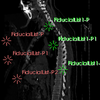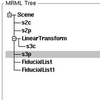Difference between revisions of "Slicer3:Registration"
| Line 36: | Line 36: | ||
Image:Registration_DataModule.png|[[Modules:Data-Documentation-3.4|Data Module]] is used to apply transforms on the fly to one or more volumes, to resample and concatenate transforms. | Image:Registration_DataModule.png|[[Modules:Data-Documentation-3.4|Data Module]] is used to apply transforms on the fly to one or more volumes, to resample and concatenate transforms. | ||
Image:Registration_EDitor_icon.png|The [[Modules:Editor-Documentation-3.4|Interactive Editor]] can be used to draw/define ROI regions that can be used as mask input to the automated registration. | Image:Registration_EDitor_icon.png|The [[Modules:Editor-Documentation-3.4|Interactive Editor]] can be used to draw/define ROI regions that can be used as mask input to the automated registration. | ||
| − | Image:Registration_OtsuThreshold_icon.png|The [[Modules:OtsuThreshold-Documentation-3.4|Otsu's Segmentation Module]] | + | Image:Registration_OtsuThreshold_icon.png|The [[Modules:OtsuThreshold-Documentation-3.4|Otsu's Segmentation Module]] can also be used to quickly identify your object from the background and use the resulting labelmap as mask in automated registration. |
Image:Registration_DTIresample_icon.png|The [[Modules:ResampleDTIVolume-Documentation-3.4|DTI resample module]] is used to apply a given transform to the DTI tensor data. | Image:Registration_DTIresample_icon.png|The [[Modules:ResampleDTIVolume-Documentation-3.4|DTI resample module]] is used to apply a given transform to the DTI tensor data. | ||
Image:Registration_Resample_icon.png|The [[Modules:ResampleVolume-Documentation-3.4|Resample Volume]] can be used to apply a given transform to a volume, with specific interpolation settings (linear, nearest neighbor and five flavors of sinc). | Image:Registration_Resample_icon.png|The [[Modules:ResampleVolume-Documentation-3.4|Resample Volume]] can be used to apply a given transform to a volume, with specific interpolation settings (linear, nearest neighbor and five flavors of sinc). | ||
Revision as of 14:02, 20 January 2010
Home < Slicer3:RegistrationContents
Default Registration Module
The Register Images Module (Casey Goodlett, Stephen Aylward) performs automated image registration, rigid to affine, based on image intensity similarities. It allows to focus the registration on a region of interest, either via a mask labelmap or via the ROI module (see Auxilary modules below).
Alternative Registration Modules
The Transforms Module(Alex Yarmarkovich) allows to manually and interactively move one image to align with another (rigid only). This can be used for initial alignment.
The Linear Registration (Daniel Blezek) module performs automated rigid registration. This is being replaced by the Register Images Module that performs the same function.
The Affine Registration Daniel Blezek) module performs automated affine registration. This is being replaced by the Register Images Module that performs the same function.
The Deformable B-Spline Registration Module (Bill Lorensen) performs automated image warping based on image intensities.
Modules for Special Case Registration
The ACPC Transform module (Nicole Aucoin) is used to orient brain images along the anatomical reference line between the anterior and posterior commissure.
The Fiducial Alignment module (Casey Goodlett) can align images based on pairs of manually selected fiducial points (rigid and affine).
The HAMMER module (Guorong Wu, Dinggang Shen) performs elastic (non-rigid) alignment of brain images of different individuals based on tissue class segmentation and intensity (experimental stage).
The ICP Surface Registration Module (Luca Antiga:) performs automated registration of surfaces (not images). This is useful if image data directly is unreliable, but surfaces can be produced from segmentations that provide good information about desired alignment.
Auxilary Modules
ROI Volume can be used to define a local box region to be considered exclusively for automated registration.
The Fiducials Module is used to place fiducial pairs that can be used to run Fiducial-based registration or to evaluate registration quality
Data Module is used to apply transforms on the fly to one or more volumes, to resample and concatenate transforms.
The Interactive Editor can be used to draw/define ROI regions that can be used as mask input to the automated registration.
The Otsu's Segmentation Module can also be used to quickly identify your object from the background and use the resulting labelmap as mask in automated registration.
The DTI resample module is used to apply a given transform to the DTI tensor data.
The Resample Volume can be used to apply a given transform to a volume, with specific interpolation settings (linear, nearest neighbor and five flavors of sinc).
The Resample Volume2 (Francois Budin) implements image and vector-image resampling through the use of ITK Transforms (rigid, affine, BSpline).
The Subtract Images can be used to evaluate registration quality, particularly of intra-subject intra-modality cases.
The Checkerboard Filter can be used to evaluate registration quality

